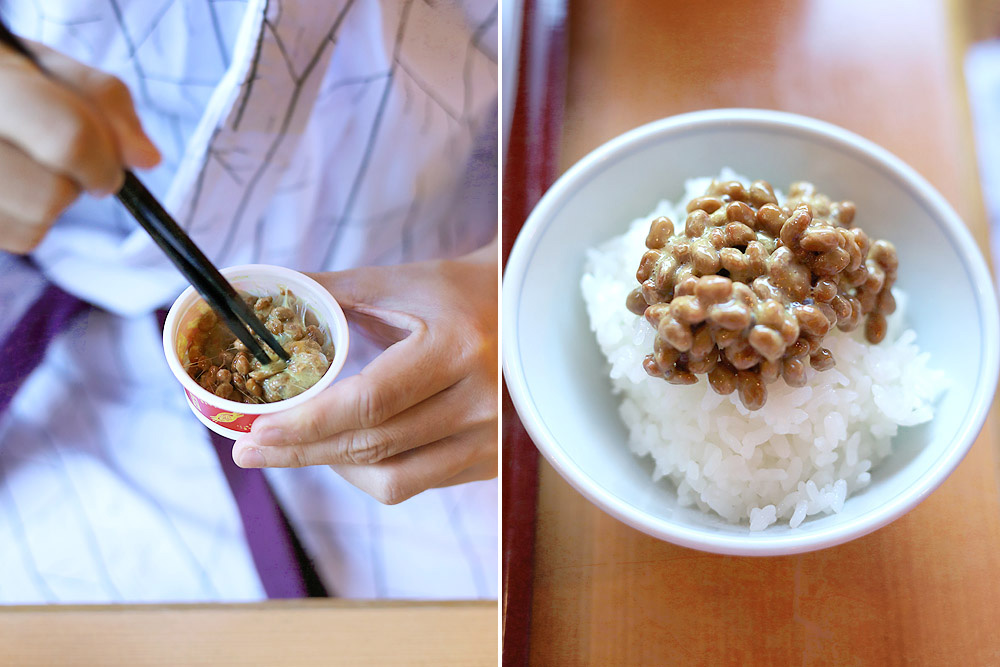TOKYO, Sept 9 — Bored of buttery croissants? Done with greasy fry-ups? Cereal? Too dull. A smoothie? Too sweet. One of those “Big Breakfasts”? Too heavy.
Rise and shine — it’s time for breakfast. But what to have, when all the usual suspects aren’t quite right?
For a truly nutritious morning meal, let’s head to the Land of the Rising Sun. Given its moniker, Japan understands how to rise and how to shine better than most.
The Japanese call breakfast asa gohan — literally “morning rice” — and this name is a decent introduction to how they view the meal: it shouldn’t be anything you wouldn’t have for lunch or for dinner.
Breakfast isn’t an afterthought; it’s meant to be packed with everything that is good for you.
Whether served in a ryokan guesthouse with low tables and tatami mat flooring or in the comforts of home, a typical asa gohan is served on a large tray. (The better to view all the good stuff you’re about to partake of, perhaps.)

Before you dig in with your pair of chopsticks, you remember to say thanks for the fantastic meal you are about to eat. You do as the Japanese do and say “Itadakimasu!” You are grateful even before your first bite, before your first sip.
Yes, your first sip. Those of us who are Cantonese will appreciate the Japanese way of starting the meal — even when the meal is breakfast — by warming our bellies with some hot soup.
Where asa gohan is concerned, soup is typically miso shiru or miso soup. It’s a simple soup to prepare; at its most basic, it’s little more than umami-rich miso (fermented soybean paste) and some dashi broth, the most ubiquitous stock in a Japanese kitchen (the Japanese “mother stock”, if you will).
Look closely and you may uncover tiny treasures within the soup: Cubes of firm tofu and slivers of aburaage (deep-fried bean curd pouches). Tender slices of shiitake mushrooms. A vibrant sprinkle of wakame fronds and rings of green onion.
Once your body is warmed by the miso shiru, your eyes begin to wander. What else is in front of you?

Unusually for breakfast (at least from a Western perspective), there are vegetables. Known as kobachi, these side dishes offer fibre and minerals to make your meal more balanced.
On any given morning you might find a platter of kinpira gobo, that sweet sauté-then-braise of burdock root and carrot; the refreshing and nutty horensou no goma-ae, where blanched and chilled spinach is dressed with sesame seed sauce; a namasu salad of vividly orange carrot and cloud white daikon radish, julienned and tossed in sweetened vinegar; and the briny and honeyed flavours of wild hijiki seaweed.
The Japanese make it easy to eat your greens (and oranges and whites and more).
A perfect slab of tamagoyaki — that quintessential rolled Japanese omelette — is enriched with dashi in addition to the eggs and soy sauce. A single bite reveals its silky-soft and custard-like texture, subtly sweet and savoury.

And then there’s the fish.
(What? Fish, you ask?)
Yes, fish. No balanced breakfast is complete without some protein to sustain us for the rest of the day (and to build lean muscle mass and for longevity, the latter which the Japanese have some degree of expertise in).
Besides the egg protein contributed by the tamagoyaki, another popular breakfast protein comes in the form of grilled fish or yakizakana. Be it salmon (sake, pronounced “sha-keh” in Japanese), blue mackerel (saba) or horse mackerel (aji), these are gently salted and then grilled or broiled.
Simple and delicious, and full of heart-healthy omega-3 fatty acids.

As curious Totto-chan would learn in Tetsuko Kuroyanagi’s The Little Girl at the Window, a well rounded meal ought to have “something from the ocean and something from the hills.”
If grilled fish satisfies the need for “something from the ocean”, then tsukemono or pickled vegetables would fit the bill of “something from the hills”, surely?
The bounty of Japan’s fertile lands means that tsukemono can be made from a variety of fresh and seasonal produce, from cabbage and carrots to aubergines and ginger.
An easy favourite for most of us might be fukujinzuke (pickled daikon radish) whereas umeboshi (pickled plums), another traditional tsukemono, might be more of an acquired taste.

You can’t enjoy your pickled vegetables without hot steamed rice, naturally. Certainly rice is a staple all across Asia and not the most unusual choice for breakfast (we have our nasi lemak, for instance). Rather than long-grain rice, hakumai or short-grain white rice is used in Japan.
But not always. Sometimes you are served a bowl of genmai (brown rice) or takikomi gohan (“mixed rice” in Japanese), with strips of carrots, mushrooms and aburaage strewn amongst the grains.
Perhaps the best way to enjoy that hot steamed rice is with some natto or fermented soy beans. Some might be deterred by its slimy threads but that’s just gooey goodness and textural contrast.
Mixed well with the accompanying sachets of savoury tare sauce and karashi (spicy mustard), and every mouthful is like ambrosia, funky and fortifying. A great start to your day.
Of course, every meal must come to an end. So how do you finish your first meal of the day, at least in Japan?

Recalling the basic tenet that you can have for dinner what you have for breakfast, a simple dessert provides the requisite sweet ending. Some fresh fruits drizzled with cold milk or yoghurt will work wonderfully.
And rather than tea, how about a cup of hot black coffee or kohi, as they call it in a traditional smoke-filled kissaten?
You are sated; you can eat no more. You say “Gochisousama!” to announce this and that you have thoroughly enjoyed your breakfast.
Time to greet the rest of this amazing day. The taste of your asa gohan will follow you, fuelling you, as you make the most of it.
For more slice-of-life stories, visit lifeforbeginners.com.






















